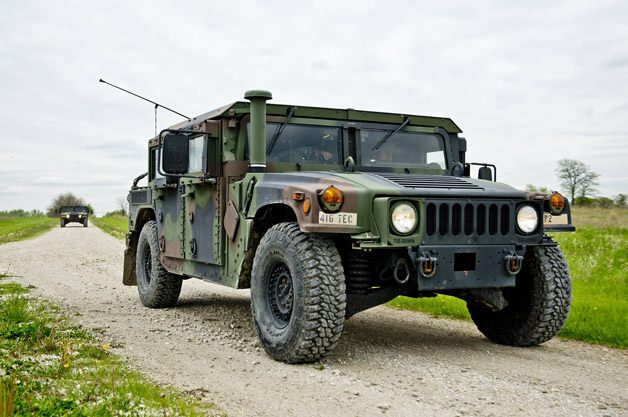What It Takes To Drive The Army's Favorite Mule

For the first time in two hours, it was quiet. SPC Brian Stehlin turned the HMMWV ignition switch from Run to Engine Stop, killing the agricultural clatter of the AM General diesel. The four of us, three soldiers in the US Army Reserve and me, pulled up on the combat lock handles inside of each door, freeing us from the thickly lined metal box that passes for an automotive interior. We stepped out, and for just a few seconds the late-morning symphony of insects and birds was the loudest ambient sound. We'd gotten stuck.
Before this, I didn't know that Humvees (the pronounceable common name for High Mobility Multipurpose Wheeled Vehicle, or HMMWV) got stuck. Raised on images, television clips and movies of Humvees racing across deserts and scaling seemingly insurmountable objects, I'd have sooner assumed that the Army's workhorse would charge through a hillside in a torquey blast than bog down before it in the slick Joliet mud.
Of course, neither the quiet nor the mud-entrenchment lasted very long. If I learned one thing during my day of HMMWV driver training with the Reserves' 416th Theater Engineer Command, it's that the Army doesn't lack for ways to get you moving again. Small arms fire from the range down the street crackled, silencing the local fauna just before orders were shouted, chains were pulled from truck beds and the pastoral air was filled once more with grumbling of turbodiesel V8s. Getting stuck turned out to be a lesson in getting free – one of just a few I'd soak up while hanging with the Army.
No comments:
Post a Comment